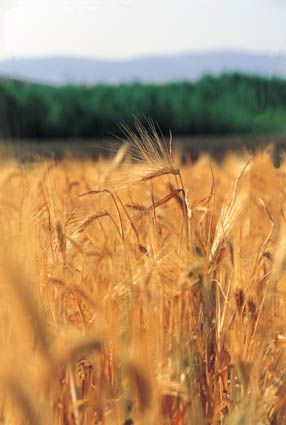According to the definition in article 2 of ORDER ITC/2877/2008, of 9 October, establishing a mechanism to promote the use of biofuels and other renewable fuels for transport purposes,biofuels are liquid or gaseous fuels for transport produced from biomass.
Biomass, as defined in that Order, means the biodegradable fraction of products, waste and residues from agriculture (including substances of plant and animal origin), forestry and related industries, as well as the biodegradable fraction of industrial and municipal waste.
The main biofuels
The main biofuels (at both global and national level) taking into account their commercial development, are currently the following:
Bioethanol, defined as an ethyl alcohol produced from agricultural products or those of vegetable origin, whether used untreated or after chemical modification or transformation.
Biodiesel, that is methyl or ethyl esters produced from fats of animal or vegetable origin.
HVO Biodiesel (Hydrotreated Vegetable Oil biodiesel), a hydrocarbon resulting from the treatment of vegetable oils or animal fats with hydrogen, either in dedicated facilities or using co-processing technologies in refineries.
In the next few years, other biofuels which are not currently present in the national market for transport fuels, such as biogas (a gaseous fuel produced by anaerobic digestion of biomass) or synthetic biofuels (synthetic hydrocarbons produced from biomass using thermal and catalytic conversion technologies), are expected to arrive in the market.
Biofuels currently on the market are mainly used in road transport. However, it is worth noting the growing use of biofuel in the aviation sector, where it is called biokerosene.
Energy content of biofuels
The Annex to the previously mentioned Order ITC/2877/2008, as amended by the Resolution of 27 December 2013 of the Secretary of State for Energy, establishes the applicable values for the energy content and density of biofuels, petrol and automotive diesel.
|
Fuel |
Energy content by volume (toe/m3) |
Density (kg/l) |
|
Bioethanol |
0.5016 |
0.7778 |
|
Bio-ETBE |
0.6449 (of which 37 % comes from renewable sources). |
0.7500 |
|
Biomethanol |
0.3822 |
0.8000 |
|
Bio-MTBE |
0.6210 (of which 22 % comes from renewable sources). |
0.7429 |
|
Bio-DME |
0.4538 |
0.6786 |
|
Bio-TAEE |
0.6927 (of which 29 % comes from renewable sources). |
0.7632 |
|
Biobutanol |
0.6449 |
0.8182 |
|
Biodiesel |
0.7882 |
0.8919 |
|
Fischer-Tropsch Diesel |
0.8121 |
0.7727 |
|
Vegetable oil treated with hydrogen |
0.8121 |
0.7727 |
|
Pure vegetable oil |
0.8121 |
0.9189 |
|
Petrol |
0.7643 |
0.7442 |
|
Diesel |
0.8598 |
0.8372 |
In addition to the values listed above, the energy content by weight of biogas is determined to be 50 MJ/kg.
Note: A tonne of oil equivalent (toe) is 41.868 gigajoules.
Reduction of greenhouse gas emissions
The use of biofuels instead of fossil fuels means a life-cycle reduction in greenhouse gas emissions. The reduction obtained depends on each production process and can be calculated using the methodology established in Directive 28/2009 on Renewable Energies, and using harmonised calculation tools such as the IDAE Greenhouse Gas Calculator, Calcugei. Regardless of the actual values that can be calculated on a case-by-case basis, Directive 28/2009 recognises generic greenhouse gas emission reduction levels applicable to a number of common biofuel production processes.
TABLE A: Typical values (1) and default values (2) for biofuels produced without net carbon emissions due to land-use change.
|
Biofuel production process |
Reduction of greenhouse gas emissions, typical values |
Reduction of greenhouse gas emissions, default values |
|
Ethanol from sugar beet |
61% |
52% |
|
Wheat ethanol (process fuel not specified) |
32% |
16% |
|
Wheat ethanol (lignite as process fuel in cogeneration plants) |
32% |
16% |
|
Wheat ethanol (natural gas as process fuel in conventional boilers) |
45% |
34% |
|
Wheat ethanol (natural gas as process fuel in cogeneration plants) |
53% |
47% |
|
Wheat ethanol (straw as process fuel in cogeneration plants) |
69% |
69% |
|
Corn ethanol, Community production (natural gas as process fuel in cogeneration plants) |
56% |
49% |
|
Ethanol from cane sugar |
71% |
71% |
|
Part of the ethyl-tert-butyl ether from renewable sources (ETBE) |
The same as those from the process used in the production of ethanol |
The same as those from the process used in the production of ethanol |
|
Part of the tert-amyl ethyl ether from renewable sources (TAEE) |
The same as those from the process used in the production of ethanol |
The same as those from the process used in the production of ethanol |
|
Rapeseed biodiesel |
45% |
38% |
|
Sunflower biodiesel |
58% |
51% |
|
Soy biodiesel |
40% |
31% |
|
Palm oil biodiesel (process not specified) |
36% |
19% |
|
Palm oil biodiesel (process with methane capture in the mill) |
62% |
56% |
|
Biodiesel from used oils (of animal or vegetable origin) (*) |
88% |
83% |
|
Vegetable oil from rapeseed treated with hydrogen |
51% |
47% |
|
Vegetable oil from sunflowers treated with hydrogen |
65% |
62% |
|
Vegetable oil from palm treated with hydrogen (process not specified) |
40% |
26% |
|
Vegetable oil from palm treated with hydrogen (process with capture of methane in the mill) |
68% |
65% |
|
Pure vegetable oil from rapeseed |
58% |
57% |
|
Biogas produced from urban organic waste as compressed natural gas |
80% |
73% |
|
Biogas produced from wet manure as compressed natural gas |
84% |
81% |
|
Biogas produced from dry manure as compressed natural gas |
86% |
82% |
(*) Excluding animal oils produced from animal by-products classified as category 3 material in accordance with Regulation (EC) No 1774/2002 of the European Parliament and of the Council of 3 October 2002 laying down health rules concerning animal by-products not intended for human consumption.
TABLE B: Estimated typical and default values for future biofuels not found on the market in January 2008 (or only found in negligible quantities) produced without net carbon emissions due to land-use changes.
|
Biofuel production process |
Reduction of greenhouse gas emissions, typical values |
Reduction of greenhouse gas emissions, default values |
|
Ethanol from wheat straw |
87% |
85% |
|
Ethanol from wood residues |
80% |
74% |
|
Ethanol from cultivated wood |
76% |
70% |
|
Fischer-Tropsch diesel from wood residues |
95% |
95% |
|
Fischer-Tropsch diesel from cultivated wood |
93% |
93% |
|
Dimethyl ether from wood residues (DME) |
95% |
95% |
|
DME from cultivated wood |
92% |
92% |
|
Methanol from wood residues |
94% |
94% |
|
Methanol from cultivated wood |
91% |
91% |
|
Part of the methyl-tert-butyl ether from renewable sources (MTBE) |
The same as those from the process used in the production of methanol |
The same as those from the process used in the production of methanol |
Notes:
(1) The typical value is the estimate of the reduction of representative greenhouse gas emissions in a given biofuel production process. This value can be used by Member States when calculating the net reduction in greenhouse gas emissions resulting from the use of biofuels to be included in the report to the EC on progress in the promotion and use of energy from renewable sources.
(2) The default value is derived from a typical value by applying predetermined factors in order to establish conservative levels compared to normal production processes. This is the value economic operators, in the circumstances specified in Directive 28/2009, can use instead of an actual value.
(3) Regarding the reduction of greenhouse gas emissions from biofuels, the reference fossil fuel value shall be the most recent available value for actual average emissions from the fossil fuel part of petrol and diesel consumed in the Community, as reported in the framework of Directive 98/70/EC. If this data is not available, the value used will be 83.8 gCO2eq/MJ.
Further information: IDAE Department of Biomass and Residues.




